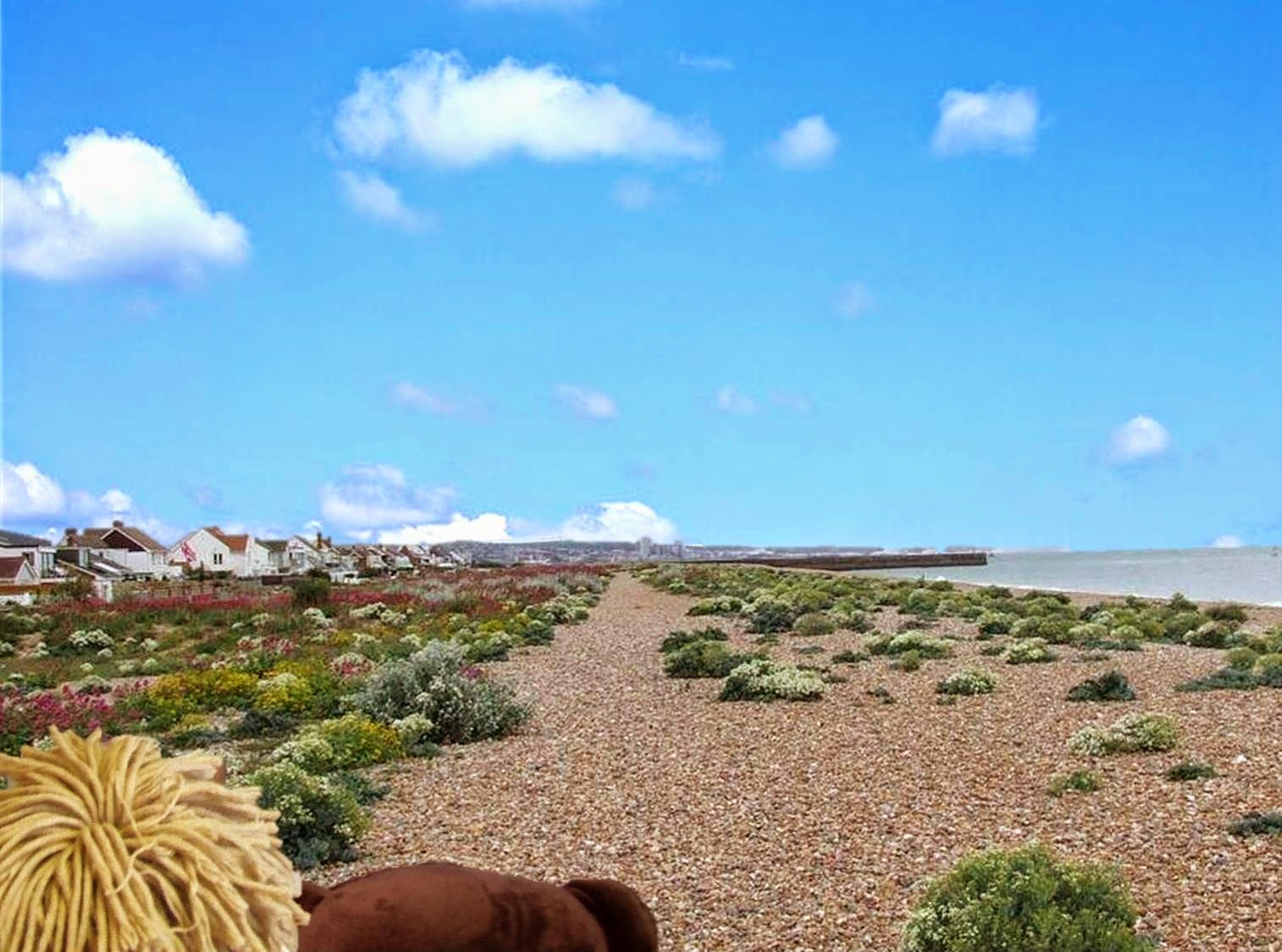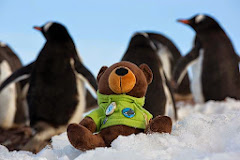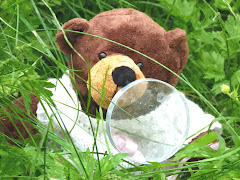Yesterday I took Abby along with me and Bella to our annual World Oceans Day Event.
The display also explained why my beach at Shoreham is so special and was made a nature reserve because of the rare vegetated shingle plants.
We set up our stand as usual that told people about the oceans and why they are important, such as how the create our climate and weather, provide freshwater, food, oxygen and much more.
I also included some information about when I visited Abby in South Africa so everyone would know who she was.
Abby also helped me to explain about ocean acidification and how more than normal amounts of carbon dioxide from the air are entering the oceans and changing the water chemistry. This is making it harder for corals and shellfish to build those beautiful tough shells.
An experiment of the stand using vinegar and a sea shell shows the science behind ocean acidification.
Abby was a great help but I said she could go and look around the other displays to what other people are doing.
She checked out the stand by Friends of Shoreham Beach N
ature Reserve that had a display about the plants, wildlife but also the beach litter.
She checked out an aquarium tank...
...and also a lobster
She even met claws from the Sussex Wildlife Trust Stand
Abby then had a chat with Bell and helped on her part of the stand. As you know Bella is exploring why freshwater is the most valuable substance on the planet - which of course also comes from teh ocean.
Bella helps out at the Lewes Railway Land Nature Reserve where there is lots of fresh water and pond life. Bella is exploring freshwater in nature and how people use water and how in the UK people often waste water because it is so plentiful. But in some parts of the world its very scarce.
Bella will soon be traveling to the Amazon Rainforest with Amazon Rainforest Workshops to learn about this amazing place, the wildlife and how even here not everyone has clean drinking water.
The day went really quickly as there was so much to do and so many people to talk to.
It wa sonly after the evnt that I got the chance to have a chat properly with Abby and find out what she had been doing since I visited her.








